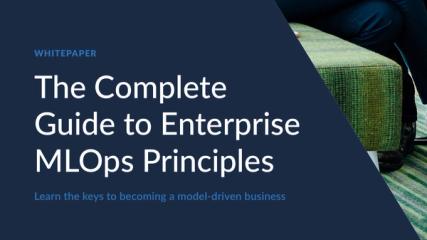MLOps
What is MLOps?
Machine Learning Operations (MLOps) is a set of technologies and best practices that streamline the management, development, deployment, and monitoring of data science models at scale across a diverse enterprise. MLOps is multidisciplinary, often bringing together data scientists, DevOps engineers, ML Architects and software developers.
What are the Benefits of MLOps?
MLOps principles and platforms provide organizations with repeatability and consistency within the data science discipline, allowing for teams to:
- Progress through the end-to-end data science lifecycle to manage, develop, deploy, and monitor business-critical machine learning models faster.
- Scale enterprise models with the requisite security, governance, compliance, reproducibility, and auditability that are required to do this safely and universally.
- Keeps models operating at peak performance through continuous model training.
What is the difference between MLOps and DevOps?
While both DevOps and MLOps involve code, pipelines, and continuous cross-functional communication, the behavior of software in production is predetermined whereas models' behavior changes over time. MLOps takes DevOps development standardization principles into account within the context of machine learning models. Data Science is experimental, with many rapidly more rapidly changing parts compared to software development. As a result, there are more complexities to keep track of that MLOps focuses on specifically, in addition to the probabilistic behavior of ml models.
Stages of MLOps
For organizations that want to efficiently scale their data science operations, they not only need to support enterprise-grade development and production, but they also need to follow the same standard process that data scientists use.
- The Manage stage focuses on understanding the objectives and requirements of the project and prioritizing the work.
- The Develop stage is where data scientists build and assess various models based on a variety of different modeling techniques.
- The Deploy stage moves the model into a state where it can be used within business processes for decision making.
- The Monitor stage is the operational phase of the lifecycle where organizations ensure that the model is delivering the expected business value and performance.




